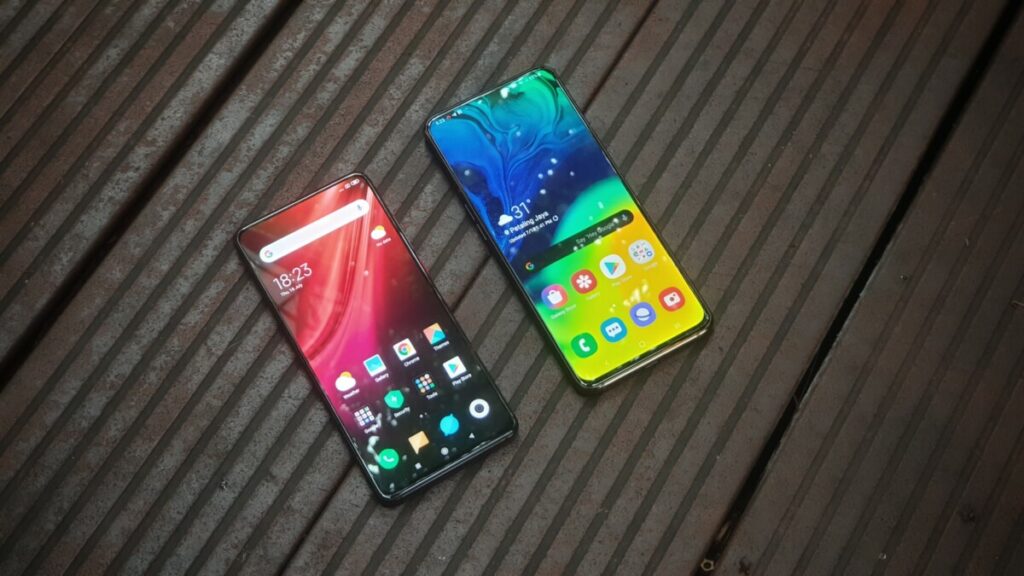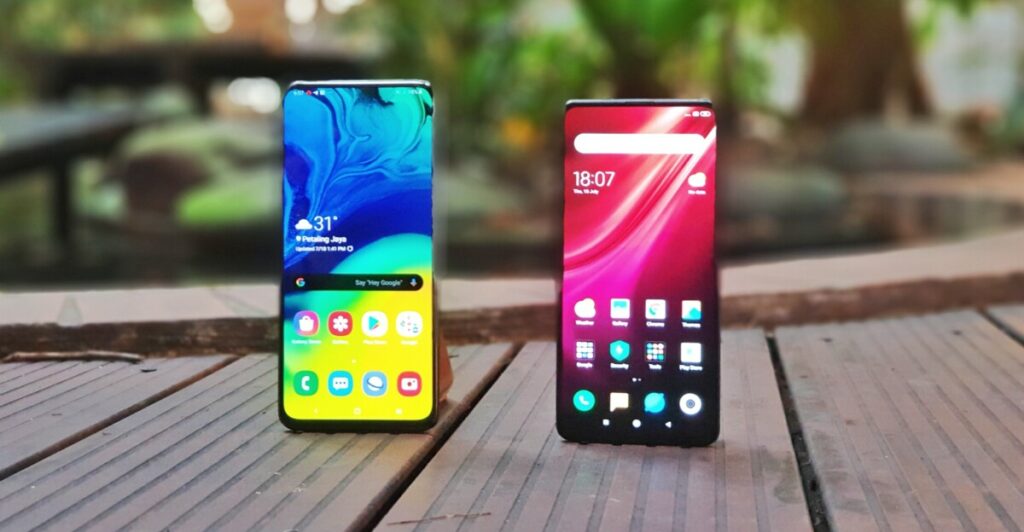
Xiaomi Mi 9T vs Samsung Galaxy A80 – Which Snapdragon 730 Phone Should You Pick?
The new Snapdragon 730 from Qualcomm is one of the latest upper midrange processors to hit the market and packs a potent combination of power and battery efficiency, integrates AI capabilities and offers beefier gaming performance too. Since its release sometime earlier this year, there’s only been a few phones in the market that pack this potent new processor. For Malaysia, two newly launched contenders integrated the Snapdragon 730 in their design – the Xiaomi Mi 9T and the Samsung Galaxy A80. Both are equally powerful and capable in their own ways.
While both smartphones are powered with the Snapdragon 730 processor, both are designed from the ground up to cater to different audiences and have unique features that make them truly distinct from each other. Let’s round out the basics of what the Xiaomi Mi 9T and the Galaxy A80 are about. Special thanks to Nasi Lemak Tech for taking time out to discuss the virtues of these two powerhouse phones.
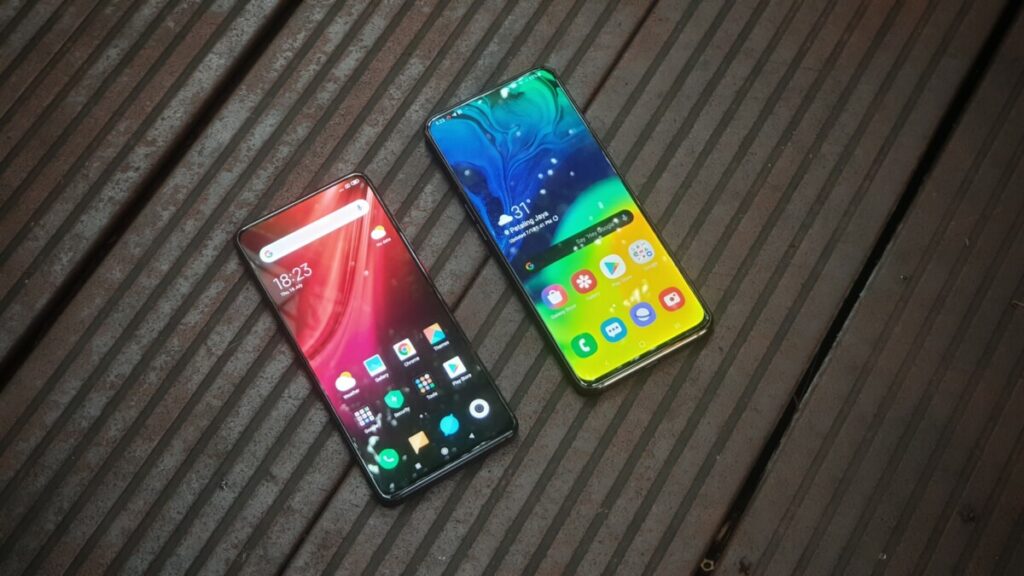
Xiaomi Mi 9T
Table of Contents
Xiaomi’s latest phone in Malaysia brings to the table a bevy of their latest technologies built around the core of the Qualcomm Snapdragon 730 2.2GHz processor. Up front, you have a large 6.39-inch AMOLED panel with nary a notch in sight and 2,340 x 1080 pixel resolution augmented by an under-display fingerprint reader at the base of the phone sheathed in Corning Gorilla Glass 5. Paired with this is 6GB RAM and 64GB of non-expandable storage with the Mi 9T running Android 9.0 Pie overlaid by their latest MIUI 10.3.7 user interface.
On the imaging front, the Xiaomi Mi 9T mounts a vertically mounted rear triple camera-array that consists of a primary 48-MP camera with a large F/1.8 aperture, a secondary 8-MP F/2.4 camera with a 2x optical zoom lens and a 13-MP F/2.4 ultrawide lens capable of capturing up to 4K video. Seeing as the front of the Mi 9T is almost all touchscreen, they’ve installed the selfie camera in a motorised pop-up mechanism which slides up to reveal a 20-MP F/2.2 camera that uses a screen as flash for mugshots in low light.
The chassis itself is clad in mirrored glass all around the backplate with a shiny black finish all around as well as a subtle series of pale gray hazard stripe accents to accentuate the back which lends it a very distinctive look as well as a heft and tactility befitting a premium phone. This is also on account of the fact that it has a rather large 4,000mAh battery too with Qualcomm’s Quick Charge 3.0 which is capable of 18W fast charging via a USB Type-C port at the base of the phone. All this clocks in at RM1,199 which is a staggeringly low price for something with a spanking new processor and a triple camera.
Samsung Galaxy A80
One of Samsung’s most powerful Galaxy A series smartphones in Malaysia, the Galaxy A80 is also the only phone in its line-up that rethinks the classic conundrum of putting separate cameras up front for selfies and in the rear for general food and scenery snapping duties. Instead, the Galaxy A80 has a triple camera module that flips to the front or back as needed for selfies and more general work. That means you’re getting a massive 48-MP F/2.0 primary camera and a secondary 8-MP F/2.2 ultrawide camera for selfies if you so choose. It also can capture up to 4K footage on demand while the ToF 3D camera enables capturing Live Focus Video at FHD.
Up front, the Galaxy A80 has a 6.7-inch Super AMOLED display with 2,400 x 1080 pixels sheathed in Corning Gorilla Glass 3. The rest of the hardware consists of Android Pie 9.0 overlaid by their One UI on the Snapdragon 730 processor paired with 8GB RAM and 128GB of non-expandable storage. Keeping it powered is a 3,700mAh battery with 25W fast charging via a Type C port. In Malaysia, the Galaxy A80 retails for RM2,499.
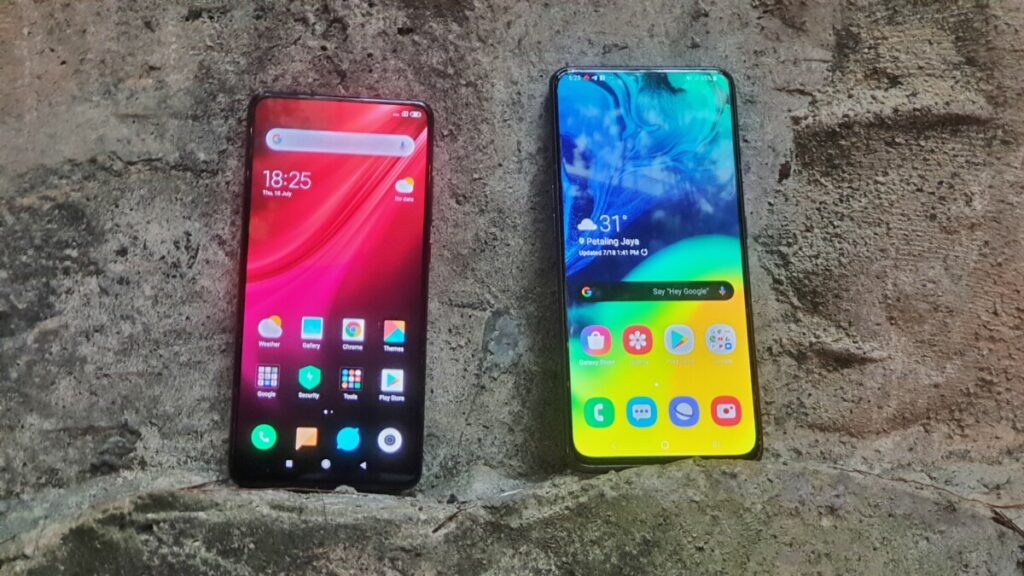
Here’s how both the Mi 9T and Galaxy A80 stack up and differ from each other:
#1 Storage and RAM
The Samsung Galaxy A80 edges out with 2GB more RAM and doubles the storage of the Mi 9T, cramming in 8GB RAM and a whopping 128GB of storage. The Mi 9T on the other hand has somewhat more pedestrian aspirations here with 6GB RAM and 64GB of storage. A 128GB variant is also available with a similar amount of RAM and 128GB of storage too.
Both phones don’t have microSD card slots so what you have is what you’re stuck with for the indefinite future. Unless you’re one to download a ton of movies, books and games on your phone, even 64GB of storage is plenty before you have to start worrying about running out of space.
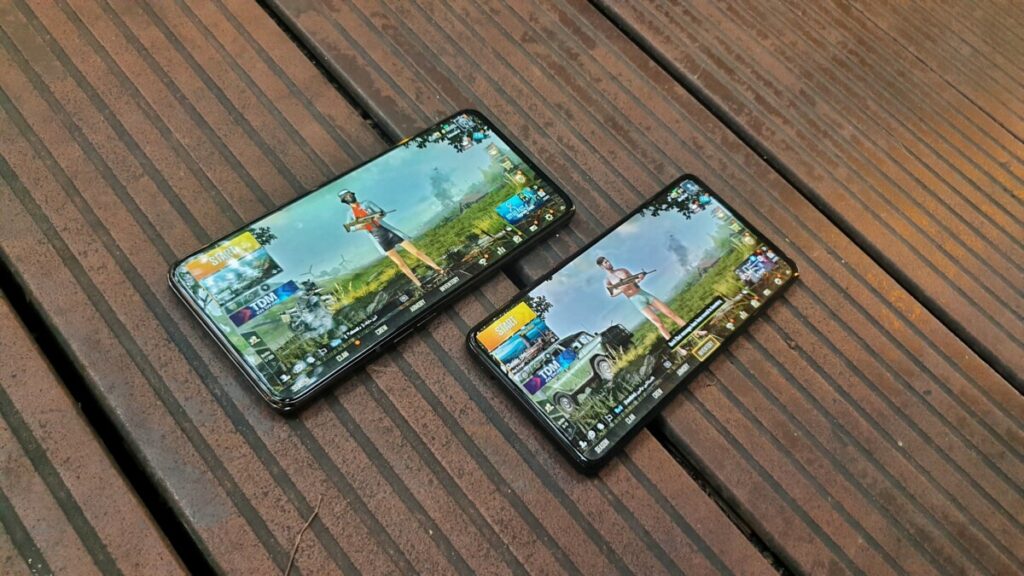 More RAM is always preferred of course as it allows for faster switching between a multitude of apps and processes – with games in the mix – though at this current point in time for the vast majority of users, all that RAM usually isn’t fully utilised anyway and it’s the equivalent of adding extra space in the boot of a car but never using it. While 4GB is usually insufficient for the needs of today’s apps and games, 6GB is the ideal sweet spot that caters to the vast majority of users and which optimally maximises RAM usage in a phone like the Mi 9T.
More RAM is always preferred of course as it allows for faster switching between a multitude of apps and processes – with games in the mix – though at this current point in time for the vast majority of users, all that RAM usually isn’t fully utilised anyway and it’s the equivalent of adding extra space in the boot of a car but never using it. While 4GB is usually insufficient for the needs of today’s apps and games, 6GB is the ideal sweet spot that caters to the vast majority of users and which optimally maximises RAM usage in a phone like the Mi 9T.
#2 3.5mm Audio Jack
There’s two sides to the topic but the point of the matter is that when you’re designing a phone, every single inch matters especially internally to make space for essential components. The mainstay standard of personal audio, the 3.5mm audio jack is a remarkable example of tech that has remained constant for decades and is able to support entry and premium level headphones level alike.
On the other hand, the growing prevalence of wireless headphones and headsets helps resolve the problem of trailing around a snakepit of wires when you’re out and about but the audio quality of Bluetooth connectivity is still a notch or two behind wired kit – especially when it comes to audio delay. Another particular benefit to the 3.5mm audio jack is that its ubiquity and tactility means that you can literally use it in the dark. Granted, USB Type-C to 3.5mm audio jack dongles exist but you can’t exactly use them while you’re charging your phone either which is a bit of a pain.
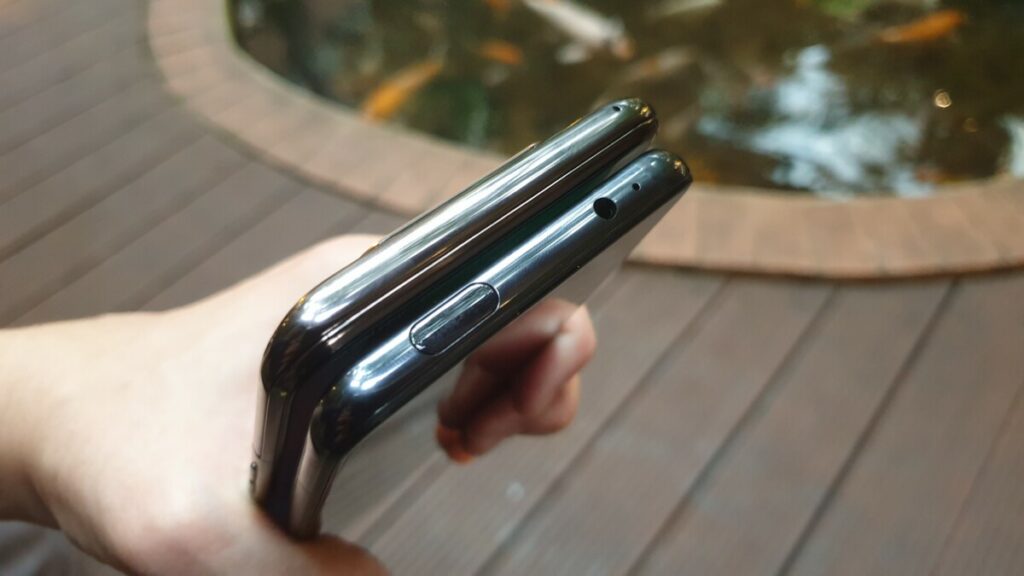
The Mi 9T retains a 3.5mm audio jack while the Galaxy A80 lacks one
In this case, the Mi 9T sports a true blue 3.5mm audio jack but the future-facing Galaxy A80 does not so it’s a matter of personal listening preferences versus convenience. The Mi 9T also sports support HiRes audio too and with the right pair of headphones, it’s able to deliver lusciously beautiful music straight to your ears.
#3 Cameras
Both the Galaxy A80 and Mi 9T sport cameras with primary 48-MP sensors though they differ slightly in terms of their specifications. The Mi 9T’s triple rear camera array doesn’t rotate to the front and therefore relies on the fixed-forward-facing 20-MP pop-up selfie camera, unlike the Galaxy A80. The Galaxy A80 can orient its powerful 48-MP to the back or the front as needed.
Both the Galaxy A80 and the Mi 9T both have ultra wide secondary cameras but here is where design philosophies differ. The Mi 9T adds in a 2x optical zoom telephoto camera but the Galaxy A80 opts instead to integrate a ToF 3D camera for creamier bokeh when capturing Live Focus Video though this camera only comes into action when capturing videos. The Galaxy A80’s camera setup comes in handy for live streaming while the Mi 9T is optimised for those who capture more pictures than video which is usually most users out there on a day to day basis.

Another interesting point to note is that the Galaxy A80’s camera user interface is refined for point and shoot work and for casual shooters, it can deliver exceptional results for stills and up to 4K video. In the case of the Mi 9T, it has a more diverse range of options, including a more robust Pro mode though the sheer breadth and depth of the menus means it is more rewarding to those who are able to invest the time in mastering it.
#4 Battery Life
The Xiaomi Mi 9T comes with a 4,000mAh battery with Qualcomm QuickCharge 3.0 18W fast charging while the Galaxy A80 has a smaller 3,700mAh battery but swifter 25W fast charging, What this translates to is that the Mi 9T has slightly longer endurance in the field but in comparison has slightly slower fast charging tech compared to the Galaxy A80.
To be fair, both phones are capable of offering all-day battery life on paper on account of the efficiency of the Snapdragon 730 processor but it also depends on how you use them. A user who maxes out screen brightness and then just devotes time solely to gaming and other processor intensive tasks will likely drain the battery much faster than someone who uses it in a more modest fashion with an average use case of modest gaming, web browsing and nattering away on social media.
A slightly larger battery is, of course, a prudent and preferred measure which works out best if you’re regularly out in the field or if you’re out on holiday and where finding a charge point or toting a power bank around may not be a practical option.
#5 Price Tag
The 6GB RAM/ 64GB storage version of the Xiaomi Mi 9T for the Malaysia market retails for RM1,199 while the 6GB RAM/128GB variant retails for RM1,399. The Galaxy A80 with its 8GB RAM/128GB storage retails for a more substantial RM2,499. Even with a similar processor, this disparity in pricing is also on account of their design philosophies and the various features that each phone packs, all of which are angled towards a different target market.
The Mi 9T is the epitome of bang for the buck with a contemporary design and a feature list that ticks off all the essentials on what makes a great smartphone with the cherry on the cake being its exceptional affordability.
On the other hand, the Galaxy A80 is built in the manner of a concept car with next-generation technologies in the form of their slick motorised front/rear camera mechanism that lets you use what would have been a powerful rear camera for selfie duties too along with an exquisitely finished design and build quality. All this clocks in at a significant premium too.
Xiaomi Mi 9T vs Galaxy A80 – Who is the winner?
Both these phones may have the same processor thrumming within them but evolutionarily speaking, both are as different as night and day. If you’re after a truly premium experience with exquisitely engineered design and have deep pockets, the Galaxy A80 won’t disappoint you. For those seeking a phone that offers serious bang for the buck, the Xiaomi Mi 9T represents a finely tuned blend of performance and affordability that few others can match.
